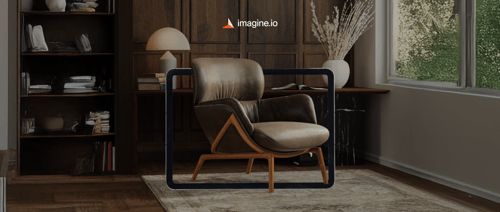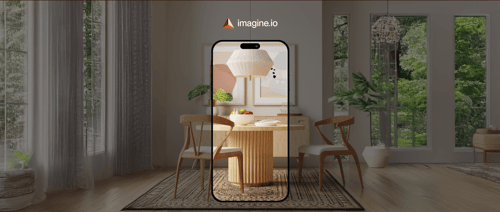Picture a bustling warehouse: photographers adjusting lights, stylists arranging furniture, and creative directors debating the perfect angle for a single chair. For brands managing multiple product lines, this scene once the backbone of product photography is becoming a relic. The modern challenge is delivering high-quality, consistent visuals across eCommerce platforms, social media, and virtual showrooms, all while juggling diverse brand identities and skyrocketing SKU counts. The solution? Subscription-based content platforms that streamline creative production, cut costs, and keep brands competitive in markets from Austin to Canada.
Why Multi-Brand Content Management Is at a Crossroads
The complexity of managing visuals for multi-brand portfolios has reached a tipping point. Furniture, home décor, and textile brands face relentless pressure to produce photorealistic imagery, videos, and interactive experiences like product configurators for omnichannel sales. Traditional photoshoots, with their hefty price tags and long lead times, can't keep up. Enter platforms like imagine.io, an AI-powered B2B SaaS solution that delivers 3D product visualizations, augmented reality (AR) experiences, and virtual showrooms at scale. By leveraging cloud-based rendering, brands can save up to 70% on creative costs and boost eCommerce conversions by over 500%, according to imagine.io's data.
The shift to subscription-based models isn't just about cost. It's about predictability and scale. Brands like Kichler or SertaSimmons, which operate across regions like New York and Los Angeles, need a steady stream of assets to meet marketplace demands. A centralized content pipeline ensures consistency while allowing each brand to maintain its unique aesthetic, whether it's minimalist lighting or plush mattresses.
Trends Reshaping Multi-Brand Content Strategies
Centralized Content Hubs
One of the biggest shifts is the rise of centralized content hubs. These platforms consolidate creative operations, enabling brands to produce everything from 360-degree spins to lifestyle imagery for platforms like Instagram and LinkedIn. Unlike traditional agencies charging per project, subscription-based platforms offer unlimited asset creation, ideal for brands with complex catalogs. For example, a company like Hunter Fan can generate visuals for ceiling fans across multiple styles modern, industrial, or rustic without coordinating separate vendors for each sub-brand.
AI-Powered Visualization
AI-driven 3D visualization is transforming how brands approach content. By uploading a product model to a platform like imagine.io, companies can generate photorealistic images, videos, or AR experiences in minutes. Studies by imagine.io show that even eCommerce experts struggle to distinguish their CGI imagery from traditional photoshoots. This speed is a lifeline for brands racing to launch seasonal collections in competitive markets like High Point or Dallas.
Marketplace-Driven Consistency
Marketplaces like Amazon and Wayfair enforce strict imagery standards clean backgrounds, precise angles, high resolution. Non-compliance means rejected listings, which can dent revenue. A centralized platform ensures visuals meet these requirements across regions, from Chicago to Canada, without starting from scratch for each marketplace. This consistency is critical for multi-brand portfolios aiming to scale globally.
Real-World Success Stories
Home Goods at Scale
Consider a home goods conglomerate managing furniture, textiles, and décor brands. Using a subscription-based platform, they can produce seasonal updates think new sofa fabrics or holiday-themed bedding without the chaos of multiple photoshoots. One such brand leveraged imagine.io to create videos, AR viewers, and product configurators across their portfolio, slashing creative costs and accelerating time-to-market. The platform's all-in-one approach, covering images, 360 spins, and interactive tools, eliminated the need for fragmented vendor relationships.
Fashion Retail Efficiency
Multi-brand fashion retailers face a similar juggling act: maintaining distinct aesthetics while streamlining production. A unified content engine allows them to create lifestyle imagery for social media or interactive configurators for eCommerce, all while preserving each brand's visual identity. For example, a retailer can produce tailored visuals for urban markets like Los Angeles or more traditional ones like Las Vegas, ensuring brand cohesion across channels.
Global Adaptability
For brands operating across North America and beyond, scalability is key. A platform like imagine.io enables companies to adapt content for different markets without rebuilding from the ground up. A furniture brand, for instance, can tweak visuals for U.S. eCommerce platforms or Canadian showrooms, ensuring regional relevance while maintaining efficiency.
Navigating the Challenges
Preserving Brand Individuality
One risk of centralized pipelines is creative homogenization. When multiple brands share a single platform, visuals can start to look too similar, eroding distinct identities. Platforms like imagine.io address this with customizable templates and AI tools that let brands fine-tune their aesthetics, but it demands active management to ensure each sub-brand stands out.
Adoption Barriers
Shifting to a subscription-based workflow can spark internal resistance. Teams accustomed to traditional photoshoots may hesitate to embrace digital-first solutions. Pricing complexity is another hurdle imagine.io's custom pricing, tailored to a client's catalog size and needs, can feel less straightforward than competitor's flat rates. Some brands also worry about working with a platform outside their vetted agency pool, which can slow decision-making.
Marketplace Compliance
Each marketplace has unique requirements Amazon's white-background mandate or Walmart's preference for lifestyle imagery. A single misstep can lead to rejected listings, costing time and money. Subscription platforms must be nimble enough to deliver compliant visuals at scale, a challenge that requires robust technology and expertise.
Unlocking Opportunities and Impact
Predictable Budgets
Subscription-based platforms bring financial clarity. Instead of budgeting for sporadic photoshoots, brands get a steady stream of assets images, videos, AR viewers within a fixed cost. This predictability is a boon for multi-brand portfolios, enabling better planning and resource allocation.
Faster Launches
An always-on content pipeline means quicker product launches. Brands like Kohler or King Koil can roll out new designs faster, meeting tight seasonal deadlines or responding to market trends. Imagine.io's cloud-based rendering, for instance, lets brands generate assets in minutes, not days, keeping them ahead of competitors.
Maximized ROI
Multi-use assets optimized for eCommerce, social media (LinkedIn, Instagram, YouTube), and virtual showrooms stretch creative budgets further. Interactive tools like product configurators, which let customers customize furniture in real-time, drive engagement and conversions. For multi-brand portfolios, this cohesion strengthens brand equity without sacrificing efficiency.
Streamlined Operations
Backend efficiency is just as critical. Platforms like Oracle Subscription Management simplify billing and renewals for complex products, handling thousands of touchpoints and pricing models. This complements creative platforms by streamlining the operational side of multi-brand management, ensuring seamless order-to-revenue processes for mixed orders with recurring or consumption-based charges.
A Forward-Looking Conclusion
The future of multi-brand content is bright and digital. As AI-driven personalization advances, subscription platforms will deliver hyper-targeted campaigns that feel custom-crafted yet cost a fraction of traditional methods. Industry experts see these pipelines evolving into core operational assets, much like inventory systems today. For furniture, home décor, and textile brands, early adoption of solutions like imagine.io offers a clear edge: faster market entry, lower costs, and stronger brand presence. In a world where every image tells a story, mastering the art of scalable content isn't just smart it's essential.
Frequently Asked Questions
What are the main benefits of using subscription-based content platforms for multi-brand portfolios?
Subscription-based content platforms offer predictable budgets, faster product launches, and significant cost savings up to 70% on creative costs according to industry data. These platforms provide an always-on content pipeline that enables brands to generate high-quality visuals, videos, and AR experiences at scale while maintaining consistency across different brand identities and marketplace requirements.
How do AI-powered 3D visualization tools help furniture and home décor brands reduce production costs?
AI-powered 3D visualization platforms can generate photorealistic images, 360-degree spins, and interactive product configurators in minutes instead of days, eliminating the need for expensive traditional photoshoots. These tools can boost eCommerce conversions by over 500% while producing CGI imagery so realistic that even industry experts struggle to distinguish it from traditional photography, making them ideal for furniture and home décor brands with complex catalogs.
What challenges do multi-brand companies face when centralizing their content creation process?
The main challenges include preserving individual brand identities to avoid creative homogenization, overcoming internal resistance from teams accustomed to traditional photoshoots, and ensuring marketplace compliance across different platforms like Amazon and Wayfair. Companies must actively manage customizable templates and AI tools to maintain each sub-brand's unique aesthetic while meeting strict imagery standards required by various eCommerce marketplaces.
Disclaimer: The above helpful resources content contains personal opinions and experiences. The information provided is for general knowledge and does not constitute professional advice.
You may also be interested in: 3D Product Visuals for Marketing – Imagine.io
Struggling with expensive, outdated product visuals that slow down your creative process and stunt eCommerce growth? imagine.io's AI-powered platform empowers furniture, home décor, and textile brands to effortlessly produce striking 3D images, immersive videos, AR experiences, and interactive configurators. Cut production costs up to 70%, boost conversions 5X, speed up prototyping, and supercharge your online sales. Ready to elevate your product visuals and captivate customers? Book a demo with imagine.io today!
Powered by flareAI.co




.png?width=500&name=How%20to%20Add%20a%203D%20Product%20Configurator%20to%20Your%20WordPress%20Website%20(Complete%20B2B%20Guide).png)
















%20(1).png?width=500&name=Why%20Exploded%20Mattress%20Views%20Matter%20(And%20How%20to%20Generate%20Them)%20(1).png)
.png?width=500&name=Best%20Shopify%20Product%20Configurator_%20How%20to%20Choose%20the%20Right%20One%20(2).png)
.png?width=500&name=Why%20Exploded%20Mattress%20Views%20Matter%20(And%20How%20to%20Generate%20Them).png)



.png?width=500&name=Best%20Shopify%20Product%20Configurator_%20How%20to%20Choose%20the%20Right%20One%20(1).png)







.png?width=500&name=How%203D%20Rendering%20Can%20Make%20or%20Break%20Your%20Industrial%20Design%20Pitch%20(1).png)








%20with%20Digital%20Twins%20and%203D%20Visualization.png?width=500&name=Optimizing%20Your%20Digital%20Asset%20Management%20(DAM)%20with%20Digital%20Twins%20and%203D%20Visualization.png)




.png?width=500&name=Styling%20Home%20Decor%20for%202025_%20From%20Global%20Influences%20to%20Playful%20Personalization%20(1).png)
